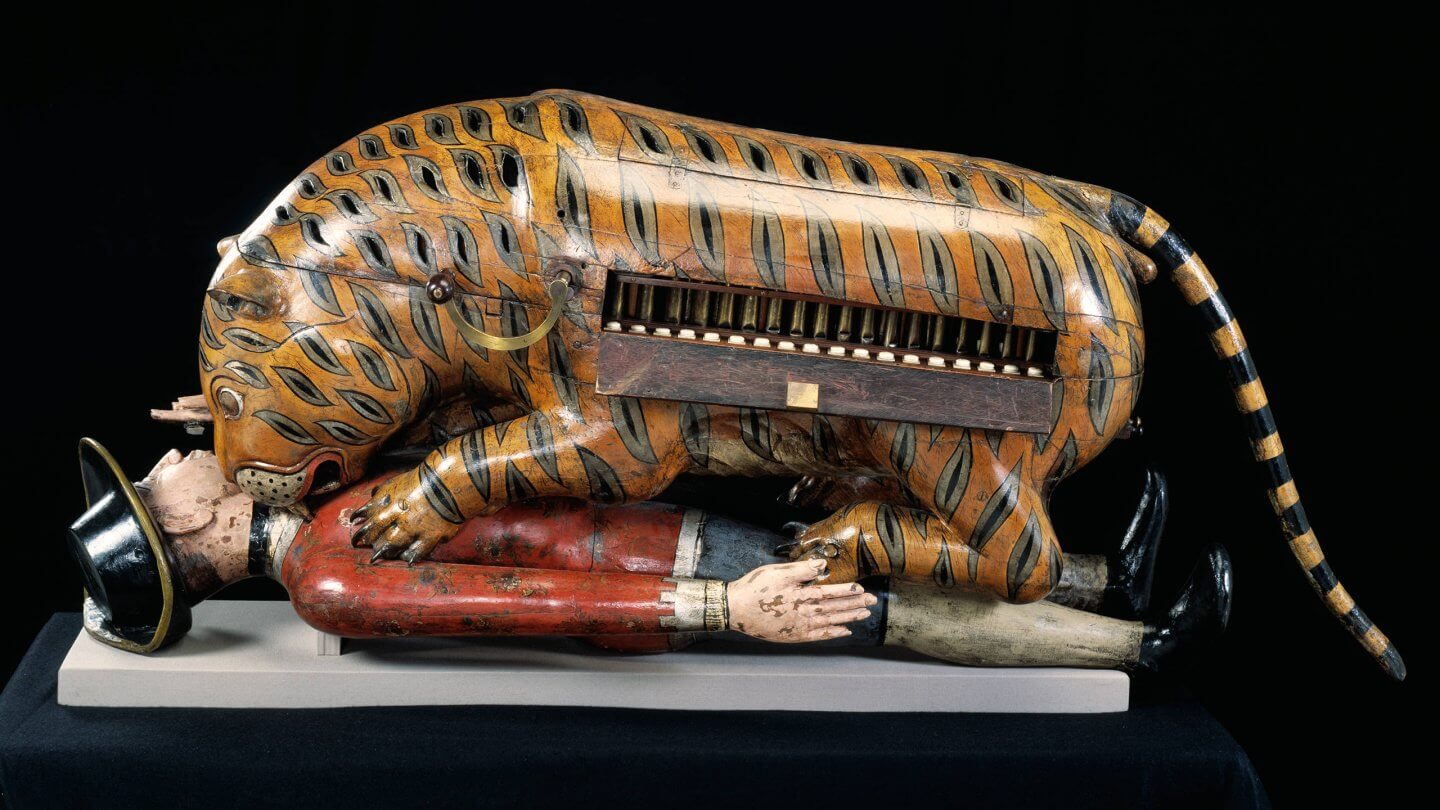Every day for 30 days we will be featuring a museum object that has inspired or intrigued us, in the hope that “an object a day keeps the doctor away.” We love creating exciting, meaningful storytelling through engaging experiences, but still firmly believe that it is hard to beat the thrill of being in the presence of authentic artefacts. Today’s object is: Tipu’s tiger.

As an exhibit Tipu’s tiger has it all. It is old. It is decorative. It has an amazing backstory. It is interactive (for curators anyway). It is fun and appeals to children.
Tippu’s Tiger is an eighteenth-century automaton or mechanical toy created for Tipu Sultan, the Muslim ruler of the Kingdom of Mysore in India. It shows a tiger mauling a European soldier lying on his back. Concealed inside the tiger’s body, behind a hinged flap, is an organ which can be operated by turning the handle next to it. This simultaneously makes the man’s arm lift up and down and produces noises intended to imitate his dying moans.
It was made for Tipu Sultan, ruler of Mysore in South India from 1782 to 1799. Tipu Sultan strongly resisted the attacks by British East India Company army on his kingdom. The Company had been established to trade, but by the late 18th century was extending British rule in India. It fought three wars against Mysore before making the final assault on Tipu’s capital, Seringapatam, in 1799. The ruler was killed as the army swept into the city and looted the houses of its inhabitants. Colonel Arthur Wellesley, later the Duke of Wellington, restored order by hanging and flogging some of the men responsible.
Tipu’s treasury was divided between the soldiers but the wooden tiger was shipped to London. It was displayed in the Company’s new Indian Museum and quickly became one of its most popular exhibits. When the Museum eventually closed, the famous tiger was transferred to the South Kensington Museum, later renamed the Victoria and Albert Museum.
The Victoria & Albert Museum is currently closed. Check website for details.
